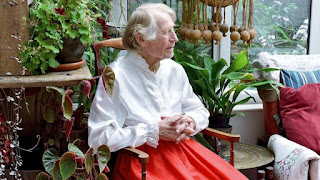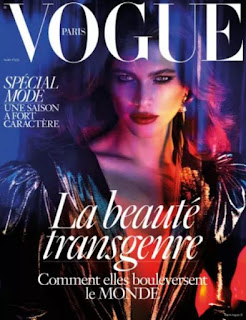Rachel Horsham (1946 - )
Horsham was raised in a small village in Surrey, with a father who had been
born in India, and a mother from Ireland. Horsham knew from an early age
that she was not really male. As Rachel she emigrated to the Netherlands in 1974
because that country recognised trans women as women at a time when the UK did
not.
She became a patient of Professor Dr Louis Gooren at the
Vrije
Universiteit (Free University) of Amsterdam, wrote the first version of her
autobiography in 1991, and completed transition in 1992.
She applied to the UK
Consulate for a re-issued UK passport in her new name and gender:
“During an interview with the Consul, I was informed that it was not possible
to be issued with a new passport reflecting my current status, at the time. Nor
would they accept a letter of Deed Poll from a Solicitor for a change of
forenames. Their reasoning: that the issuing of passports to transsexuals in the
United Kingdom, showing their female status, on production of a letter of Deed
Poll from a Solicitor, and a letter of acknowledgement from a qualified doctor,
that the bearer was a transsexual, was not legal outside of the United Kingdom.”
(Plaintiff’s
Observations)
She was told that she needed an order from a Dutch Court. This was obtained
and the passport re-issued. She became a Dutch citizen in 1993, and obtained a
ruling in a Dutch court that her UK birth certificate should be amended. As this
did not happen she initiated legal proceedings in the UK. This was appealed to
the European Court of Human Rights (ECHR) in 1994.
Kristina Sheffield (also born 1946)
Sheffield was a pilot with Brittania Airways, and had 34 years experience
when she transitioned in 1986.
Kristina divorced from her wife as was almost always required in the 1990s
(in retrospect she felt that she had been coerced into it underhandedly),
and a judge also granted an injunction banning Kristina from seeing her daughter
as “transsexuals are not suitable company for children”.
She applied to every UK airline, but was always obliged to show her birth
certificate which said that she was born male, which resulted in her not getting
employment.
While her passport was re-issued in her new name, she was still unable to
obtain a US visa, and twice in court to stand surety for a friend, was obliged
to reveal her previous name. A misunderstanding with the police with regards to
a replica firearm indicated that they were aware of her gender change although
the topic had not come up. A request under the Data Protection Act 1984 would
have required her to state all previous names.
She also appealed through the UK court system and then to the ECHR.
And then
Both cases were initially accepted by the ECHR in 1994. Kristina met with
Rachel in Amsterdam. Following advice from Rachel, Kristina revised the
statement of her case. This made the two cases rather similar although the
circumstances were different, in that Rachel wanted to marry and Kristina to
find employment. The ECHR decided to couple both appeals.
Rachel, with Kristina’s assistance researched the
Ewan
Forbes-Sempill case and the
Corbett
divorce case. They obtained the birth certificates for April Ashley,
Roberta
Cowell, Michael Dillon and
Georgina
Turtle, and the marriage certificates for Georgina Turtle and April Ashley.
Only April had not had her birth certificate amended re her name and sex. From
this they were able to conclude that the Corbetts’ divorce trial could have been
quickly concluded in that April was still legally male and thus the marriage was
invalid according to the law at that time. There was no need for the detailed
medical examinations that were done. Unless, of course, something other than an
annulment of marriage was being enacted.
The original birth certificate for Ewan Forbes-Sempill proved impossible to
obtain, however a copy specifying his male sex and name was available. The
Sempill and Corbett cases had been more about establishing the boundaries of
aristocratic privilege than of determining the best governance of transsexuals.
“It was also found, that there had been prior knowledge of these birth
certificates by the plaintiffs of former cases that had gone to the ECHR. They
were the cases of Rees
and later Cossey.
None of the fact that it was possible to amend a birth certificate, within
existing statute law, was ever presented to the ECHR in those cases. They were
based on a demand that the UK government must change the law. The court in those
cases was not prepared to demand that a government must restructure its laws.
Both cases lost and this created a case law in the ECHR upon which any further
cases from the UK would be accepted and judged. The ECHR works on the basis of
creating its own case law upon which to judge a case presented to them and where
they have none they create it. If a case challenges existing case law, then the
court can examine the situation.” (Rachel Horsham
.4)
In May 1996, Rachel wrote an anonymous article that was published in
The
Independent, "Trapped in a man's body with a woman's mind". She detailed the
then lack of human rights for transsexuals in the UK; explained how HRT and
reconstructive surgery have a 97% success rate and attributed the condition to
an incongruence of pre-natal hormones (a theory that was accepted in the late
1990s). She rightly points to the 1970 Corbett v Corbett divorce case as the
point where things went wrong.
“All that is required is for government to accept a return to the pre-1970
status quo, a move that is supported by medicine, a large section of legal
opinion and many parliamentarians. There is no need for new legislation or new
administrative systems; the Birth Certificate still contains a column where
errors at registration can be corrected as they were before 1970. Time has shown
that there were no practical complications with those corrections, and thus
there is no realistic argument for not reinstating the practice. Indeed, there
is every reason for regarding it as an urgent necessity.”
The ECHR gave its judgement 30 July 1998. By 11 to 9 it voted that the
Article 8 right to respect for a private life was not violated (although the
court noted “no steps taken by respondent State to keep need for appropriate
legal measures in this area under review despite Court’s view to that effect in
Rees and Cossey judgments — Court reiterates that view”). By 18 votes to 2 it
voted that the Article 12 right to contract lawful marriage was not violated.
Unanimously it voted that Article 14, the right not to be subjected to
difference in treatment was not violated. The judgment does not address Horsham’s argument that
Corbett vs Corbett was a bad judgment and a simple reversal would solve the
problems.
As Rachel summarises the result on her home page:
“The United Kingdom rejected [the plaintiffs’ plea] on the grounds that under
British law a person’s sex is fixed at birth and cannot be amended or changed
and argued that the Court of Human Rights had given two Judgments in their
favour upholding this contention in two previous cases, Rees and Cossey. The
plaintiff, in her submissions, proved that the government had lied to the court
in those previous cases, and that English Statute law did have the required
legislation to amend a person's birth certificate, in such cases. In 1998 the
court decided to uphold its case law based on Rees and Cossey and the case of
Rachel Horsham was never judged on the facts presented to them.”
Rachel expanded her autobiography to include the appeal to ECHR, and
published it, also in 1998.
Kristina won an employment discrimination case in 1998 at an industrial
tribunal in that she was unable to obtain even an interview with Easyjet to be a
pilot despite her 34 years’ experience.
Context
In 1997, after 18 years of homophobic Conservative misrule, the Labour Party
became the new government. Initially it continued the Conservatives’ homophobic
policies, one of which was to oppose appeals such as that by Horsham &
Sheffield. The GLBT censorship known as
Section 28 was not repealed
until 2003.
While government lawyers were in Strasburg arguing against the petitions of
Horsham and Sheffield,
Petra
Henderson, British but resident in Germany, had completed surgical
transition and wished to be recognised legally as female, which the government
quietly permitted. She had threatened to go to the ECHR and the Government
wished to keep her out of the newspapers. It was insisted that this was a
one-off exemption and did not set a precedent. There were some other similar
one-offs, such as the UK citizen in Paris who was able to obtain a similar
result with Petra's assistance. Prime Minister Tony Blair spoke of ‘joined-up
government’, but this was one area where it was definitely not so.
Press for Change had been founded in 1992. It engaged with lawyers and
Members of Parliament. Inevitably a slow process. A private member's bill was
introduced in 1996, but as the then Conservative Government refused to endorse
it, it was without success. In 2002, another appeal to the ECHR finally met
with success, and two years after that the Labour Government passed the Gender
Recognition Act – not perfect, but the best in the world at that time.
Comments

Rachel’s book is not listed in either Amazon or Abebooks. It is on the
Dwarf Empire web page.
In recent years Rachel has self-identified as
HBS,
although independently of the two major strands thereof. In 1998 the only Benjamin Syndrome movement was the
Association du Syndrome de Benjamin in Paris run by
Tom Reucher, Diane Potiron, Hugues Cariou, and which was inclusive unlike the HBS movement which developed after 2005.
- "Trapped in a man's body with a woman's mind", The Independent, 1 May
1996. Online.
- Rosa Prince. “Transsexuals in test case”. The Independent, 22
February 1998. Online.
- “British Pilot Wins Discrimination Case”. NewsPlanet, June 1, 1998.
Online.
- Case of Sheffield and Horsham v. The United Kingdom. European Court of
Human Rights, 30 July 1998. Online.
- “UK Transsexuals lose court case”. BBC News, July 30, 1998. Online.
- Christine Burns. “Court Judgement Criticises UK Government's Lack of
Action”. PFC, 9th August 1998. Online.
- Rachel Horsham. Release of the Dove. Dwarf Empire, 1991 and
1998.
Rachel
Horsham’s Home Page



























